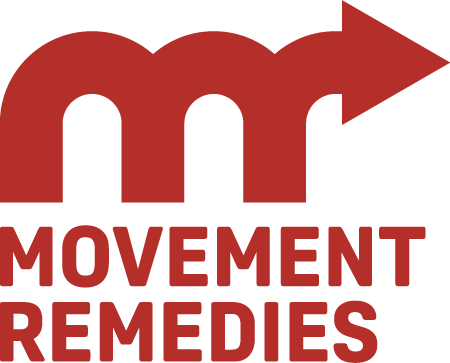Deep Dive on Peripheral Neuropathy and the Benefits of Movement
This week’s community question was on movement recommendations for peripheral neuropathy. Neuropathy is a general term referring to nerve damage that leads to pain, weakness, numbness, or tingling in one or more parts of the body. Peripheral neuropathy is a systemic condition that can result from traumatic injuries, infections, metabolic problems, inherited causes, and exposure to toxins.
According to the Mayo Clinic, “Peripheral neuropathy happens when the nerves that are located outside of the brain and spinal cord (peripheral nerves) are damaged. This condition often causes weakness, numbness and pain, usually in the hands and feet. It also can affect other areas and body functions including digestion and urination. People with peripheral neuropathy usually describe the pain as stabbing, burning or tingling.”
I will leave the details regarding diagnosis and treatment options to the clinicians. However, I did find a few systematic literature reviews exploring physical activity for patients with this condition. In the research I found that peripheral neuropathy patients were usually divided into two groups according to two of the most common causes of this syndrome: diabetic peripheral neuropathy (DPN) and chemotherapy-induced peripheral neuropathy (CIPN).
For both groups, exercise was found to be beneficial, either in conjunction with or even as an alternative to standard treatment protocols for peripheral neuropathy. For DPN, there was a particular emphasis on resistance-based training, but both DPN and CPN populations were found to benefit from the balance- and body-awareness-based kind of exercises that are integral to the Pilates approach to movement. I never cease to be amazed by how far ahead of his time Joseph Pilates was. He really built a system of exercises and equipment that benefits people on the complete spectrum of the human condition.
Below is a summary of four review articles I found.
A systematic review published in 2021 in Sports Medicine analyzed exercise interventions for neuropathic patients to evaluate the potential benefits. The article described peripheral neuropathy symptoms as “often debilitating, difficult to treat, and usually become chronic.” The article remarked that research has increased considerably since a previous, similar review had been done in 2014.
Upon reviewing 41 randomized controlled trials that met the necessary criteria, researchers concluded that exercise is beneficial for neuropathic patients, DPN and CIPN having the greatest presence in the literature. Exercise was found to improve factors such as balance, stamina, certain markers of nerve function, overall quality of life, and neuropathy-induced symptoms. A combination of endurance and sensorimotor training were most beneficial. The Neuro Studio is a great resource for learning how to apply sensorimotor training concepts through Pilates.
Frontiers in Medicine also published a systematic review in 2021 which sought to assess the impact of exercise interventions on patients with broad nerve-associated pain-related diagnoses. While this review looked at ten total conditions resulting in neuropathic pain–including DPN and CIPN–the findings were consistent: exercise is helpful in alleviating the intensity of neuropathic pain. This is probably counterintuitive to anyone who experiences these symptoms, since physical activity can trigger neuropathic pain symptoms, but overall, intensity was found to improve with the right movement program.
The researchers’ exercise guidance included, but was not limited to, muscle stretching, strengthening/resistance exercise, aerobic exercise, motor control/stabilization training and mind-body exercise (of which Pilates is one of many great examples). Proper exercise programs were proposed as an effective alternative treatment or complementary therapy for most patients with neuropathic pain.
Regarding DPN specifically, the researchers recommended using general exercise focusing on distal extremities (hand and feet), or the combination of aerobic and moderate-intensity or high-intensity exercises.
Regarding CIPN, researchers recommended muscle strengthening and balance training as treatment and game-based exercise as adjunct therapy for this population.
A review article published in the Journal of Clinical Medicine found that exercise training had been used to improve nerve conduction velocity, pain tolerance, and balance. This review concluded that exercise-based interventions greater than or equal to 4 weeks are beneficial for patients with DPN. Mobility and functional movement-based training, specifically weight-bearing exercise, was recommended as providing significant increases in gait, balance, and strength.
As a result of weight-bearing exercise training, DPN patients demonstrated greater daily step counts and walking distances.These results together suggest an opportunity for improved daily physical function and quality of life for patients with DPN. Consistent with the Movement Remedies approach to getting active with chronic pain, the studies suggest that exercise programs should start using “light” intensities and then slowly increase over time.
It was commented that aerobic exercise training at moderate intensities has shown the ability to improve sensorimotor function, cardiorespiratory endurance, reduce fatigue, and promote increased physical activity. Researchers also commented on the benefits of balance- and proprioception-based training to improve multiple different measures of static and dynamic balance performance, postural control, and strength, and to reduce fall risk. Balance and body awareness (proprioception) are core pillars of the Pilates movement approach.
In 2023, Scandinavian Journal of Medicine & Science in Sports evaluated the effects of exercise interventions to reduce chemotherapy-induced peripheral neuropathy severity. Researchers found evidence supporting exercise as a suitable intervention to reduce the severity of CIPN symptoms and the peripheral deep sensitivity among patients. Furthermore, sensorimotor training and mind–body exercises were found to be more effective in reducing symptom severity, and active nerve-specific exercises and mind–body exercises seem to be more effective in improving peripheral deep sensitivity.
